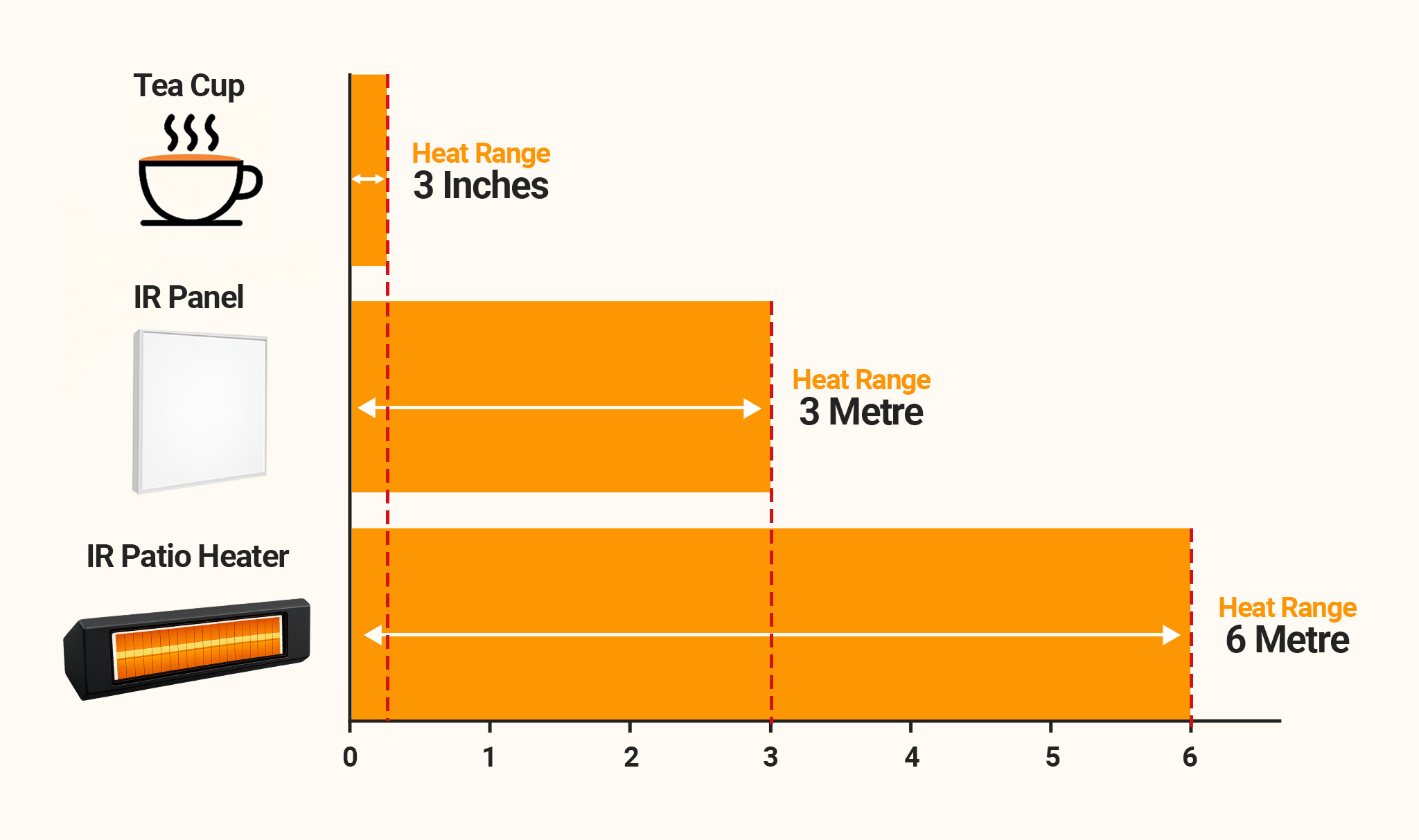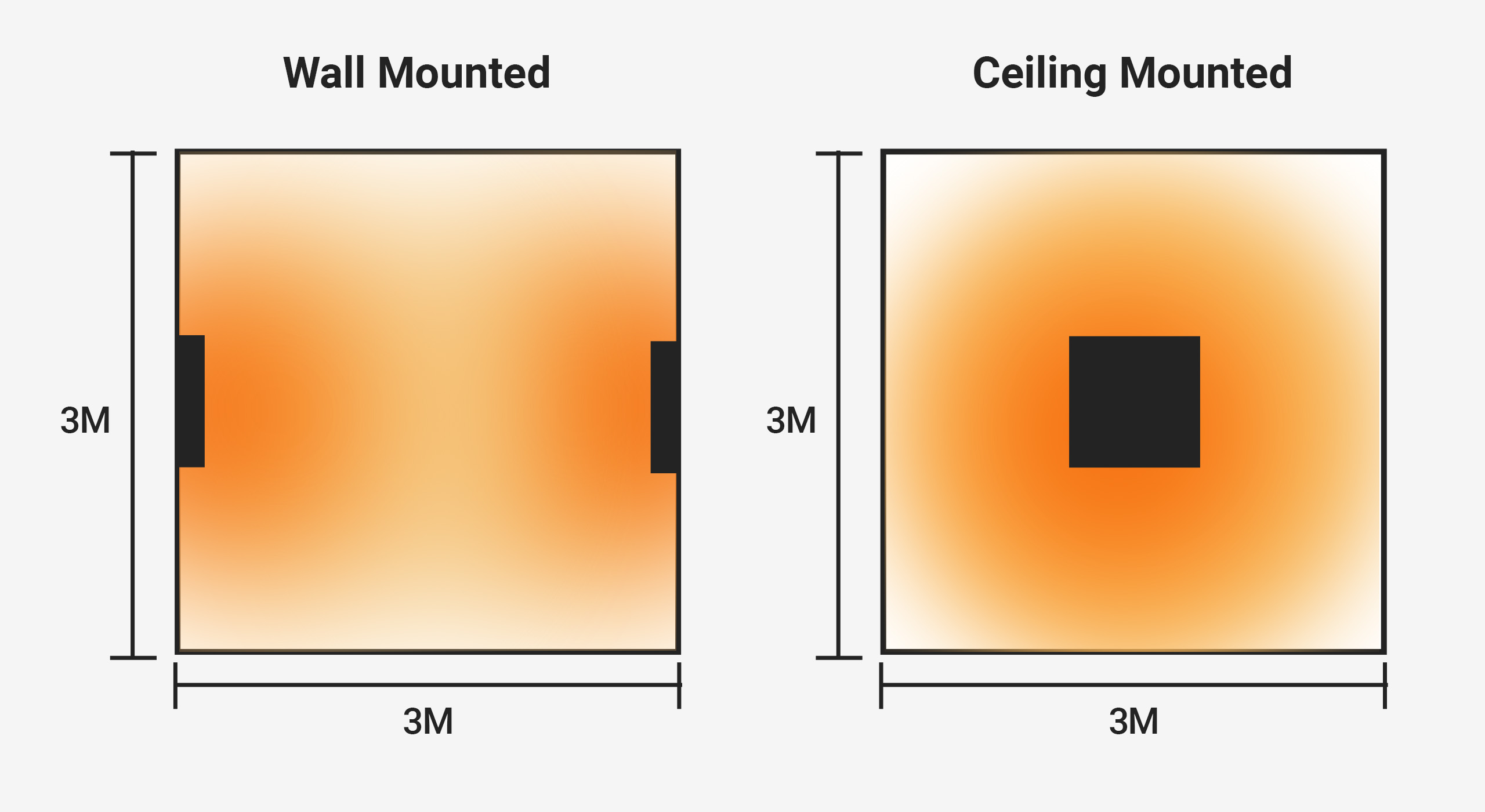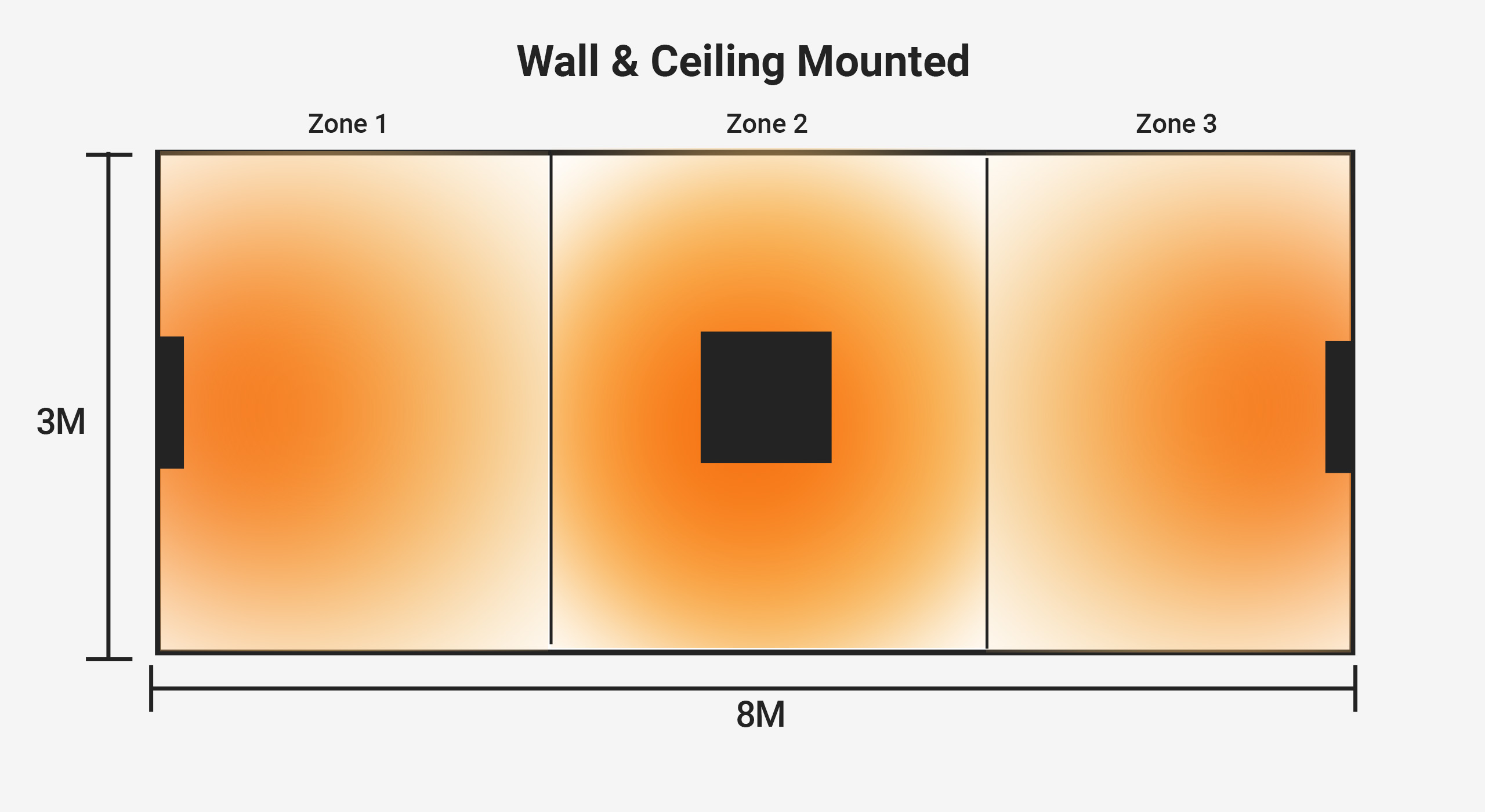
The Range Of Infrared
Like any other heat source, infrared heaters have a range. Stay inside that range and you’ll feel the warmth, step beyond it however and the heat simply won’t reach you. This is no different to putting your hand over a hot cup of tea and feeling the warmth, yet you don’t feel it from the other side of the room. The range of most IR heaters is around 3m, with the optimal zone coming in at around 2m. This is doubled for patio heaters.
Your Space
Measure the length, width and height of your space and multiply them together to get the volume of your room.
IR Requirements
Take the volume of your space, and multiply it by 25 (well insulated), 30 (moderately insulated) or 35 (poorly insulated).
Splitting Your Room
Try to block off your room into 3m x 3m zones. You can then take your IR requirement and distribute it between your zones.
Last Tweaks
Make any adjustments depending on how you use your space - you may want to prioritise zones that are busier than others.
Why Use Larger Panels?
There’s no reason why a 700W IR Panel couldn’t heat up a 3m x 3m zone, and if that’s the case, why bother with a larger panel?
The difference is warm up time. Higher wattages warm up your space faster, which is ideal for rooms that aren’t used often like bathrooms or garages.
Lower wattages will take longer to warm up your space, so this is best for areas that are used a lot like living rooms.
Larger panels are also more effective when ceiling mounted, as they can ‘see’ more of your room, and distribute heat more effectively.
In Practice…
Here’s a 3m x 3m room, and we have two options with how we heat it.
If we go with wall mounted heaters, we’ll need two panels to equally distribute the warmth across the whole area. If we go ceiling mounted, then we can use a single panel for the most optimised heat distribution.

Here, we have an 8m x 3m space, so substantially larger than the previous example. Using the principles we learnt earlier, we can split this space up into three zones sized 3m x 2.6m.
We can heat the two end zones using wall mounted panels, followed by a ceiling mounted panel for the middle zone, and this will give us the best heat map for a room like this.

